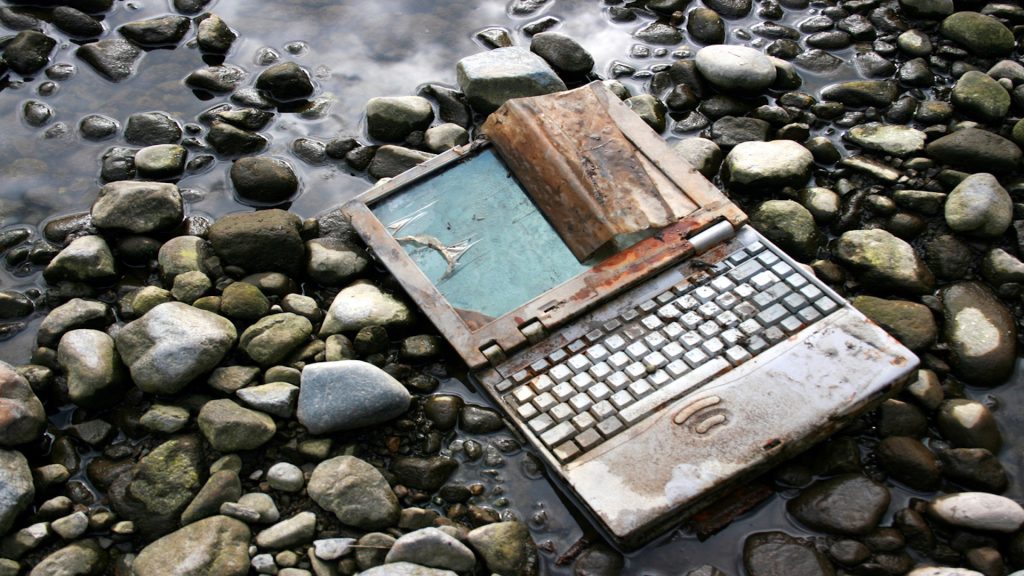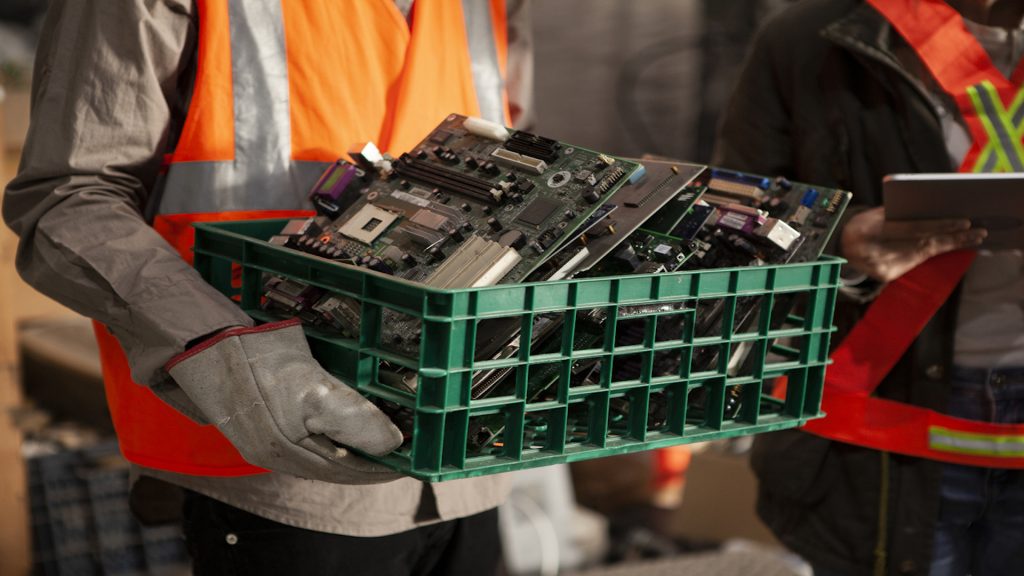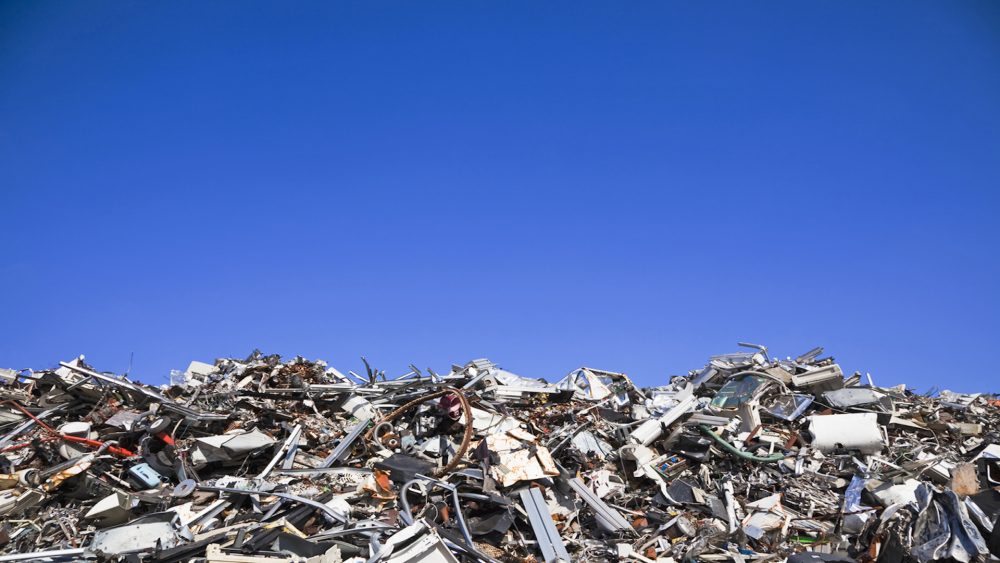On June 23, 2023, the Smithsonian National Museum of Natural History began featuring the exhibit, “Cellphone: Unseen Connections” in partnership with the electronics recycling and device reselling company Sunnking. Through this exhibit, which focuses on cell phones, Sunnking and the Smithsonian National Museum of Natural History aim to educate visitors on the importance of recycling electronics so as to combat e-waste.
E-waste is the fastest-growing waste stream in the world. The Global E-Waste Monitor 2020 reported that 53.6 million metric tons of e-waste were generated globally in 2019. Of this, only 17.4 percent was collected and recycled. The report, a collaboration between the United Nations University, the International Telecommunication Union, and the International Solid Waste Association among other international groups, charted that global e-waste would reach 74 million metric tons by 2030.
Unlike other waste streams, methods of disposal and ways to reuse or recycle electronics are not communicated or promoted on a wide scale. Here, we outline the definition, causes, and effects of e-waste. We conclude with an assessment of how companies are combatting e-waste through innovation and education and determine whether or not steps are being taken to eliminate e-waste.
What Constitutes E-Waste?
E-waste is short for electronic waste, a subset of waste that includes any item containing circuitry and/or electrical components that have a power supply or a battery. Electronics become e-waste when they are “discarded by the owner as waste without the intention of re-use,” according to StEP Initiative.
A wide array of electronics that we rely on every day can and do become e-waste. Much of this is due to a cultural conception that innovation breeds disposal when a newer, sleeker version of an electronic is put on the market. However, there is another element to the conception that electronics are not designed for reuse, and it is by design.
StEP Initiative partners with the EPA and classifies e-waste into six waste categories:
- Temperature exchange (cooling and freezing equipment like refrigerators and air conditioners)
- Screens, monitors
- Lamps
- Large equipment (washing machines, electric stoves, and copying equipment)
- Small equipment (vacuum cleaners, microwaves, video cameras, etc.)
- Small IT and telecommunication equipment (cell phones, GPS, personal computers, among others)
Planned Obsolescence

You might be thinking: ‘I do need the newest version of X product, though, because my older version is not working anymore no matter what I do.’ To which we say you are not imagining all the issues with your gadget. Nor are you in the wrong for wanting the newest version that promises to solve all your problems and relieve the pain and suffering that comes from hemorrhaging money to fix a device that you bought recently.
A lot of consumer electronics are designed with planned obsolescence in mind. Global energy leader Iberdrola defines planned obsolescence as “the practice of designing products to break quickly or become obsolete in the short to mid-term,” often through intentional changes made to the system or design of a device by the manufacturer that justifies consumers purchasing the newest version.
Some products are designed with a specific life span that makes the device inept after a certain number of years. Other products are designed to be purchased, used, and discarded based on trends. Even if a consumer attempts to abstain from planned obsolescence with their device, these attempts can be futile. Some consumer electronics are designed to make it physically impossible for the consumer to replace or repair parts of a device without rendering it unusable. Planned obsolescence makes purchasing a new device or the latest device the only viable solution for consumers.
E-Waste and Its Many Issues

Environmental
Often the most reported and visible consequences of e-waste are environmental. Consumer electronics such as cell phones are composed of toxic materials and persistent organic pollutants (POPs). For example, a cell phone can contain over 40 elements, including heavy metals like cadmium, mercury, beryllium, lead, and arsenic. According to ecoATM Gazelle, 23 percent of a cell phone’s weight is made up of metals, with the remaining 77 percent consisting of plastics and ceramic materials that also are not conducive to breaking down efficiently in the natural environment.
If disposed of improperly, these materials can leach into the natural environment and contaminate soil, air, and waterways. Once heavy metals are in these environments, they can work their way into the food chain and accumulate in crops and animals. Because there is a lack of general knowledge surrounding proper and responsible electronics recycling and disposal in the US, and the fact that proper e-waste disposal can be an added expense for companies, many electronics end up in landfills or in improper domestic and international disposal sites.
Human Health
When improperly disposed of, e-waste can have detrimental effects on human health. According to the EPA, an undetermined amount of e-waste from the US is shipped to low-income and middle-income countries. Recovering the metals in e-waste through unsafe methods like open-air burning and acid baths expose workers to harmful substances. Such exposure can have adverse health effects such as cancer, miscarriages, and neurological damage.
Social Implications
Much of the heavy metals that compose consumer electronics like cell phones are extracted via mining in low-income and middle-income countries. Mining can be extremely exploitative, dangerous, and hazardous. Furthermore, minerals in consumer electronics like tin, tungsten, tantalum and gold are considered conflict minerals. According to EcoVadis, conflict minerals are “raw materials or minerals that come from a particular part of the world where conflict is occurring and affects the mining and trading of those materials.” Rebel groups and warlords who control mines in conflict regions can make a profit off of the extraction and trade of these materials. The Democratic Republic of the Congo has a history of conflict over these resources.
There are laws in place to prevent conflict minerals from entering the supply chain. Section 1502 of the Dodd-Frank Wall Street Reform and Consumer Protection Act, also known as the Conflict Mineral Law, is a US law that requires companies to disclose their use of conflict minerals and conduct due diligence on their country of origin. Furthermore, all companies whose use of conflict minerals is “necessary to the functionality or production” of a product are required to make their sources available to the public. The EU and the Organization for Economic Cooperation (OECD) have similar laws and orders in place. Despite this, conflict minerals can still make their way into the supply chain knowingly and unknowingly. Unless minerals like tin, tungsten, tantalum and gold are ethically sourced and tracked throughout every stage of the trade process, the continual production of consumer electronics, which feeds the accumulation of e-waste, will perpetuate the human rights violations associated with the extraction of conflict minerals.
How Companies Are Combatting E-Waste

The average American consumer is unaware of how to recycle their electronics, let alone that most electronics can be recycled or given a new life. According to a survey conducted by ecoATM Gazelle, only 25 percent of Americans recycle electronic devices. 33 percent report not recycling electronics at all. However, there are steps being taken by companies to mitigate the accumulation of e-waste and eventually reach the milestone of achieving zero e-waste.
Sunnking offers electronics recycling services to businesses and residential areas in New York State. Sunnking’s complete electronics recycling processes are done out of greater Rochester, NY. Having these processes completed on-site eliminates the need to ship unprocessed materials abroad to low-income and middle-income nations, where these processes are not regulated and extraction can endanger workers and communities.
The company was also the first electronics recycling facility in New York state to achieve the R2 certification and is currently R2v3 certified. Created by the nonprofit organization SERI, R2 and R2v3 are the most widely adopted standard for responsible practices for used electronics. R2 and R2v3 assure partners and consumers that their electronics are being responsibly and ethically recycled and that their data is protected through data destruction on end-of-life electronics. There are over 1,000 R2-certified facilities across 38 countries and seven regions. Certification is an independently audited process that ensures conformance and maintains integrity. SERI understands that to achieve zero e-waste, there must be an intention to eliminate e-waste throughout electronics’ life cycles from everyone involved in the process.
Other companies like ecoATM Gazelle offer consumers convenient recycling services for cell phones and tablets through their ecoATM kiosks, located at a variety of retailers across the US and Europe. These machines make it easy for consumers to recycle their devices by selling them. Over 37 million cell phones and tablets have been recycled at ecoATM kiosks in the US.

Some companies aim to ensure sustainable and ethical manufacturing practices every step of the way. Fairphone is committed not only to eliminating e-waste but also designing and manufacturing sustainable and fair electronics. The Amsterdam-based company began as an awareness campaign on conflict materials before becoming an independent company in 2013. Fairphone designs cell phones made to last. This means making them repairable and having parts that can be easily replaced. It is the only company to have a smartphone that has a 10/10 iFixit score with the Fairphone 3, meaning it is easily repairable and reusable. Fairphone is also committed to responsibly sourcing and tracking fair materials for its phones via artisanal and small-scale mining (ASM) groups that adhere to Fairtrade regulations, which offer the most potential for improving the lives of miners and their families. Fairphone is the first and only smartphone company to be Fairtrade gold certified, which ensures that the gold used in its phones is not sourced from mines within conflict zones and is extracted responsibly through ethical working conditions. It is changing the game in terms of making consumer electronics sustainable and ethically made from the get-go through the mission and business model.
E-Waste: Where to Go from Here
There are tangible steps being taken toward eliminating e-waste by companies, organizations, governments and consumers. However, there is still much to be done if we want to achieve a circular economy, especially in the US.
A circular economy is one in which waste is reduced or outright eliminated and resources are protected because all materials, products, and services are kept in continual circulation for as long as possible. For consumer electronics, this means making devices more easily repairable by making parts replaceable and accessible for the average consumer. This reduces the need for replacing consumer electronics, funneling less of them into the growing stream of e-waste and, therefore, decreasing the production of consumer electronics that will feed these streams as well. A circular economy ensures sustainability and maintains ethical standards in the manufacturing and production of products. When structured in an inclusive way that puts social equity at the forefront, circular economies can also “protect the environment, improve economics, and elevate social justice,” according to the EPA. The EPA utilizes a helpful diagram made by the Ellen MacArthur Foundation to depict the structure of a circular economy that illustrates what the flow of technical and biological materials could look like:

In the US, the EPA has been undertaking initiatives to achieve a circular economy. In November 2021, it published its National Recycling Strategy: Part One of a Series of Building a Circular Economy. The initiative addresses that this is only one step in the journey toward achieving a circular economy and that there must be a collaborative effort among many entities and stakeholders in the way of “product redesign, source reduction, and reuse” to reach this goal. In April this year, the EPA released the Draft National Strategy to Prevent Plastic Pollution as a way of building upon its National Recycling Strategy. Companies like Fairphone and organizations like SERI are motivated by the prospect of achieving a circular economy and are making great strides in eliminating e-waste for good by embedding it into their business model, company/organizational structures, and production and manufacturing practices.
However, singular companies and organizations can only go so far when it comes to challenging established industry, manufacturing, and production processes that have proven to be too lucrative to give up. This is why eliminating e-waste takes collaborative efforts from producers, manufacturers, institutions, governments, organizations, and consumers alike.















